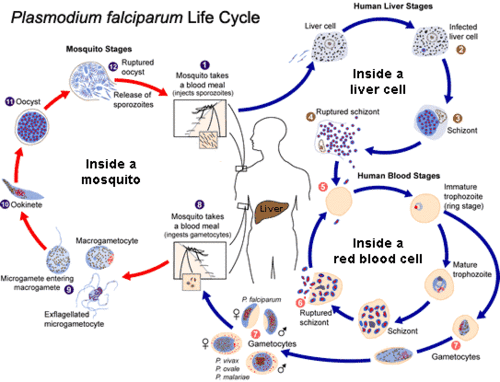Chloroquine Resistance in Plasmodium falciparum
Introduction

By Edna Kemboi
At right is a sample image insertion. It works for any image uploaded anywhere to MicrobeWiki. The insertion code consists of:
Double brackets: [[
Filename: PHIL_1181_lores.jpg
Thumbnail status: |thumb|
Pixel size: |300px|
Placement on page: |right|
Legend/credit: Plasmodium falciparum life cycle [1].
Closed double brackets: ]]
Other examples:
Bold
Italic
Subscript: H2O
Superscript: Fe3+
Introduce the topic of your paper. What microorganisms are of interest? Habitat? Applications for medicine and/or environment?
Section 1
Include some current research, with at least one figure showing data.
Plasmodium falciparum life cycle

Include some current research, with at least one figure showing data.
Mechanism of Chloroquine resistance
Within the last few decades, Chloroquine was considered the best and more widely used antimalarial drug due to its effectiveness and its reasonable cost. Unfortunately, the P. falciparum parasite developed resistance to chloroquine. These resistance was mostly observed in malaria-endemic countries.
References
[1] Hodgkin, J. and Partridge, F.A. "Caenorhabditis elegans meets microsporidia: the nematode killers from Paris." 2008. PLoS Biology 6:2634-2637.
Authored for BIOL 238 Microbiology, taught by Joan Slonczewski, 2015, Kenyon College.
